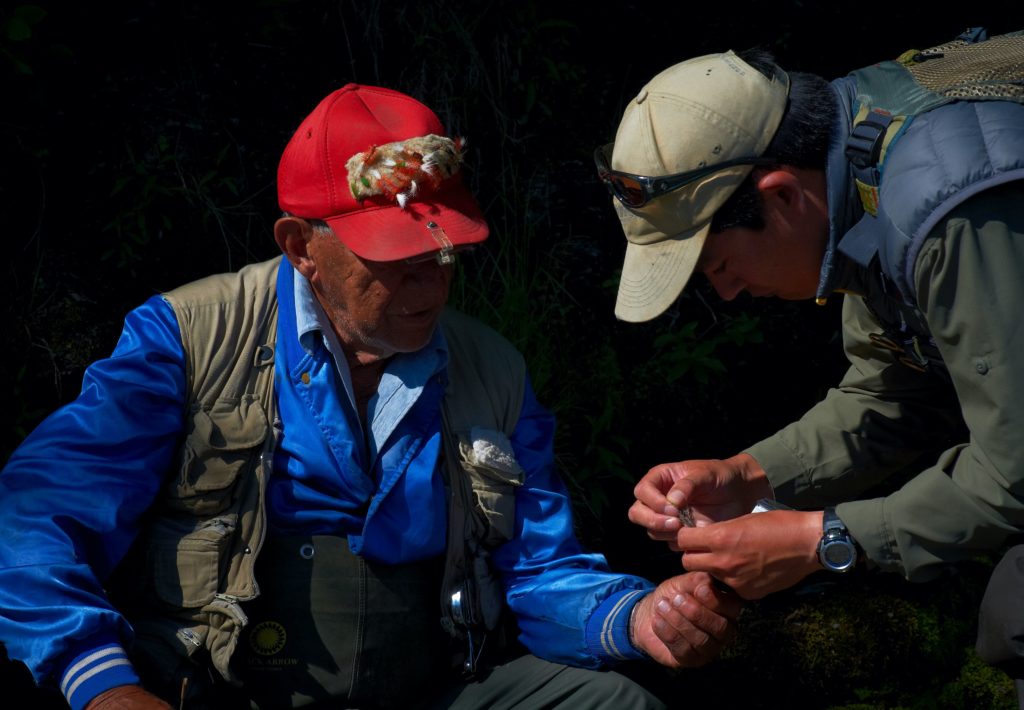
 The Bomber Story
The Bomber Story
The Bomber was initially designed as a commotion fly for fishing in the headwaters of the Miramichi River in New Brunswick. It is Mr Elmer Smith who takes the credit for the first Bomber – Initially, Mr Smith intended the Bomber to be fished sub-surface; he later thought it to be well suited for dry fly fishing and had various versions of the fly made. Today, the Bomber is the number one dry fly for most salmon anglers, and it is tied in multiple colours and sizes.
Photo of Father Elmer James Smith, the exceptional salmon dry fly pattern designer. Information and image from Miramichi Salmon Museum – Doaktown, New Brunswick, Canada
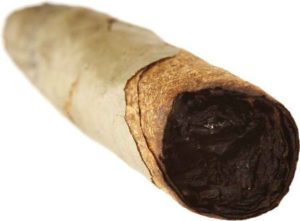
The Bomber style
Every river I have been to has had its fashion of flies – Patterns cut into shape by local anglers adjusted to suit the hurls and swirls of their river – Obviously, It is well worth looking into such aspects as pattern designs and choice of colours – Sometimes it is tiny details that make all the difference between failure or success.
Styles and colour on Bomber flies vary much across Canada and in between rivers – Anglers will also carry different versions of their Bomber to suit the specific height of water – a specific pool
West & East
The Bomber is very popular with steelhead anglers in the West and Atlantic salmon anglers on the East Coast of North America. Whereas the East Coast anglers use the Bomber as designed and intended, – Anglers fishing Steelhead have changed the overall design to enable it to wake better. Some will even shape their Bomber to work with a dive-and-pop-up motion.
Above: Caught on a Tube Bomber ™ – A modern lightweight version of the famous Bomber pattern from the ’60s.
 Wake style Bombers
Wake style Bombers
Right: A Rusty Brown Bomber (done the tube way)
A traditionally styled commotion Bomber from the West coast of Canada devised by steelhead guide John Hazel in 1979. Read more
Note the strands of Mylar we have put into the wing and tail. We integrate this material on most of our surface flies – it helps us detect the flies out on the turbulent river – and aids us in finding the fly in low light and even direct sunlight.
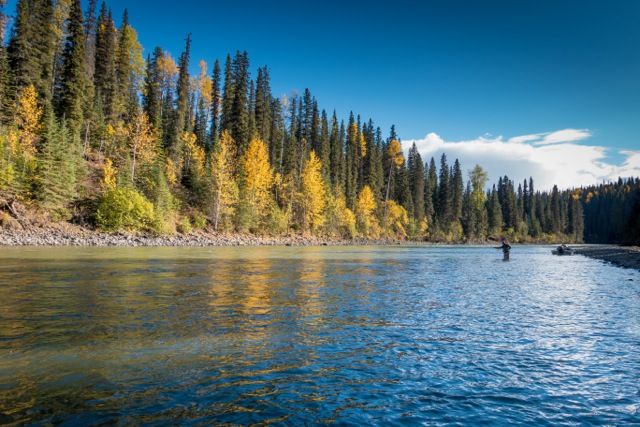
Tribute to the mighty Skeena River in BC – The holy grail for steelhead wake fly fishing – Photo by Mr Loren Irving
Babine River style
These three sizes 6 – 4 Bombers come from the fly box of Loren Irving from Bend, Oregon, and were some of the first he tied some 20 years ago. They were inspired by his fishing partners Frank Cammack and Jim Bussard, two veteran steelheaders from Bend as well. According to Loren, these flies were used in Northern BC Rivers: Bulkley, Skeena, Kispiox and The Babine.
Right: These flies were used in a documentary film produced in the mid-90s by Pierce Clegg, who then owned the Babine Norlakes Lodge, to show the tendency of BC Steelhead to very actively come to the surface to Bombers and waking flies.
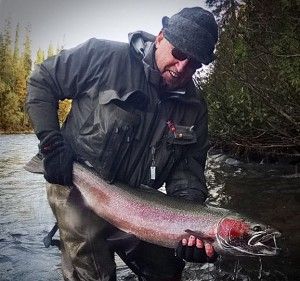
These are Bombers styled to be fished as wake flies – or swinging bombers – fished across the river on a tight line, making them drag in the surface.
If you want to learn more about steelhead fishing and flies from this famous region – we recommend you buy the Babine Book from Frank Amato Publication
Fishmadman Wake style Bombers
This type of wake fly will wake effortlessly. It is tied on tube and the leader goes through a hole in the belly of the fly – Great action on the water. Use any hook or hook setting you like
Here is the famous Moose Turd Bomber by Bill McMillan – done the Fishmadman way on our Riffling Hitch Tube.
The Moose Turd Bomber is an excellent example of the transition the Bomber has taken through the world of wake flies.
Doing the Moose Turd Bomber on a tube the Fishmadman way – with the entrance hole for the leader down on the throat of the fly is a very dependable way of getting a fly pattern to pull to the surface and wake –
These flies are lighter than traditional wake flies tied on long shank hooks. The fly will act differently than normal hook-tied wake flies.
Using tubes and short-shank hooks will also stop problems with leverage – so often seen with conventional long-shank hooks.
The tiny hooks used on these flies inflict less damage to fish jaws than that of big long shank hooks – With these flies, we do not aim to set the hook in the structure of the jaw – we want the hook to connect with the firm skin in the mouth of the fish.
Above right: Here we have done the Rusty Brown Bomber in the Fishmadman Riffling Hitch Tube way – A simple way of making different flies wake without buoyancy.
Buy these special Wake-Bombers
 Tube Bombers made for dead drift.
Tube Bombers made for dead drift.
Dead-drifting is the morbid name for a dry-fly fishing technique anchored in trout fishing traditions where the fly is left motionless, drifting over known lies.
A very efficient way to connect with Atlantic salmon
Above: The Smurf Tube Bomber ™ This particular blue is a favourite colour for several dry fly rivers in Northern Norway. Buy the flies
Fishmadman made the first tube salmon dry in 1995 we tied the classical Bomber patterns and other salmon dry flies on very thin tubes. With this approach we created light dry flies with a very
different hook-hold than that of the traditional salmon dry fly. The conversion from traditional Bombers tied on hook to tube is 20 – 33 % decrease in weight
Colours
Left: 3 Smurf Bombers: This distinct blue-coloured Bomber is a sought-after fly-pattern by Atlantic Salmon and anglers from Canada and Northern Norway. One could only guess why the colour combination on the Smurf Bomber works exceptionally well on some rivers: Maybe the blue skyline often dominates when fishing during summer. Maybe it is because the salmon can focus on light with short wavelengths like; green and bluish colours… when it enters the sea. It could also be that the contrast colour of the Smurf Bomber sticks out like other contrast Bombers
Smurf, Green and White Bombers blend right into the landscape
This HIG-VIZ Green Bomber ™ has proven effective to us in the last seasons – As it is with the colour of the Smurf Bomber, it does not mimic any particular insect, but it blends right into the background at the river. The river we fish in is lined with green birch trees. Branches are hanging over the water.
No. 1 Nordic Bomber
Undoubtedly, the white Bomber, with Grizzle or all-white hackle, is the favoured salmon dry fly among Atlantic salmon anglers in the North of Scandinavia – The wide open landscape – Broad, shallow rivers with clear water is the perfect element for the light-coloured White Bomber.
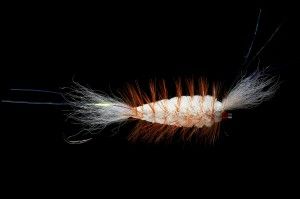
The White & Orange Bombers
Yet another colour variation of the Bomber is the White and orange Bomber. It is well suited for rivers with lots of foam cloths where a White Bomber might disappear into. Here tied the Tube Bomber way.
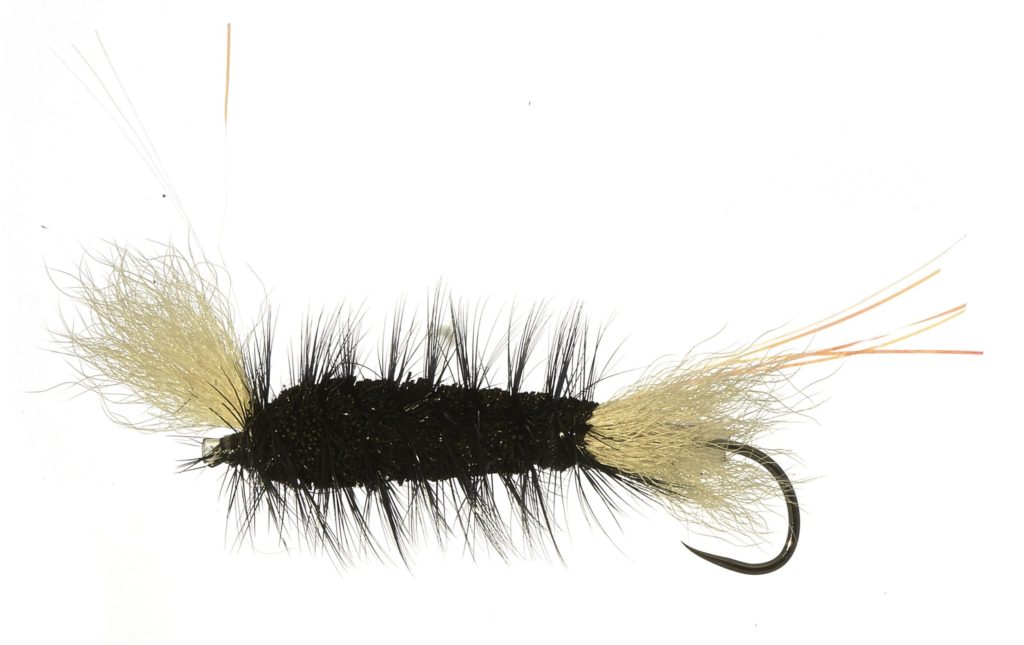
Black Bomber
A must-have Bomber in your collection – Like many other black flies, the Black Bomber will work during bright weather and a cloudy day.
The material to use
The Body on the Bomber is often tied with hairs from White Tail deer, some with Caribou hair – others use even more coarse hair from Elk. The hackle is an integrated part of the fly pattern. Some anglers prefer dens hackle. Others split the hackle to get a lighter appearance. Some bombers 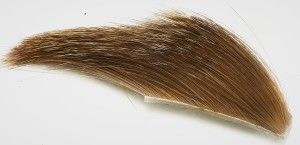
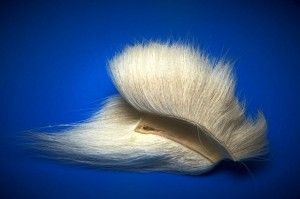
When available, we use caribou belly hair – We get this extraordinary material from Finnish caribou – Animals are harvested when the hair is big and thick – Quality caribou hair is soft, spins quickly, floats well and is easier to trim than White Tail deer hair – something essential when doing small bombers.
We have been lucky to get a small stock of this fabulous material. See it in our shop
 Large flies
Large flies
The salmon in Northern Europe is not super-interested in vast versions of the Bomber. However, this is not always the case with Newfoundland salmon, particularly the big salmon running the Humber River. We do various series of big deer hair flies for anglers fishing this river, a.o the famous guide and angler Terry Byrne. Terry once told us that he had seen Humber salmon rise and grab squirrels swimming across the river.
Above right: a regular beast of a Bomber with a 60-millimetre (2.3 inches) body tied on an → extremely long Carrie Stevens hook # 2/0 streamer hook – Probably the worst possible hook to put in the mouth of a jumping salmon.
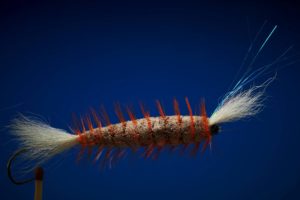
Killer Whisker
The Killer Whisker: a compact alternative to the Bomber pattern – Shares many of the features of the Bomber. It is an apparent dry fly to be tied on a tube.
See how to tie the Killer Whisker
 Small flies
Small flies
During summer, salmon turn into versions of trout – and often just as picky when it comes to details and size of flies. Small and micro versions of the Bomber can become very productive. As with medium and bigger Bombers, smaller Bombers are also styled according to local code; even fine details can determine if you hook up.
Left: a grills size Bomber tied with caribou – The styling and colour that this particular fly has is favoured by many anglers fishing Newfoundland
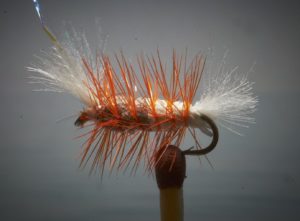
August salmon caught on Micro CDC Bomber. The cigar-shaped profile of the Bomber fly is a central point in this fly pattern and well worth putting time and effort into shaping – Our solution using little bundles of CDC for wing and tail makes a dry fly with excellent float-ability Buy CDC Micro Bombers
 Salmon Bugs
Salmon Bugs
What are Salmon bugs?
Bugs are small miniature salmon flies, for the most part, made with a deer hair body. Tied on # 8 – 12 single hooks. Either low-water salmon hooks with an up-eye or stronger down-eye trout fly hooks. It is a fly designed to be fished as a so-called dead-drifting fly on the surface. Just below the surface or across the river as a form of hitch/commotion fly, bugs may also be fished below the surface as a traditional wet fly.
Many Bug patterns have distinct fluorescent tags, diminutive tails, and dito hackles related to other famous low-water wet flies like The Undertakers and the Black Bear flies.
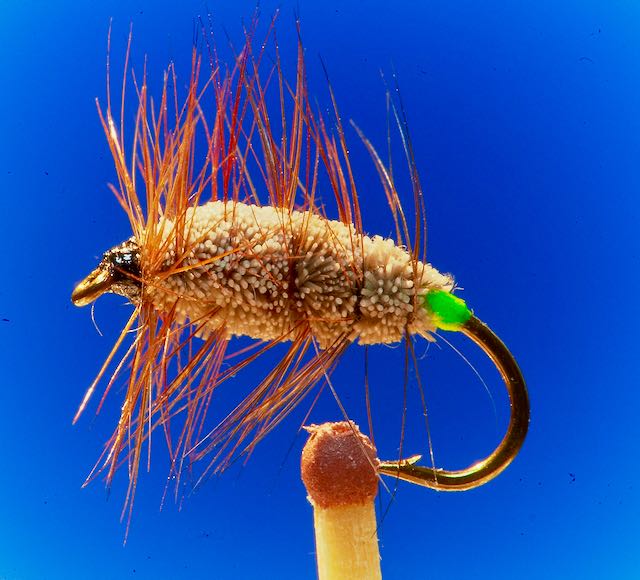
Micro Wake Moose Turd Bombers
Right: Anglers pursuing Atlantic Salmon with dry flies like Bombers will often fish the fly at dead-drift and not wake it as steelhead anglers do – But small patterns of the Bomber can be efficient when awakened, and we have designed miniature versions of the Moose Turd Bombers made by Mr Bill McMillan – done on our Riffling Hitch Tube.
See these miniature Moose Turd Bombers in the Fishmadman Shop.
Read about the history of tube flies and problems with leverage
Material details
The tube
Dry flies on a tube are designed like most other tube flies, with a nylon tube running through the fly and a hook guard situated at the rear of the fly.
The tube we used is produced to our standards – Straight (you don’t want to tie a fly on a tube coiled up on a spool) – Tubing has a low melting point and will quickly form a collar when heated.
We use the tube in a 1,8-millimetre version for bigger flies and a 1,4 mm. for the smallest flies
The hook guard
The hook guard will support the hook and must be made from superior soft-quality tubing.
We have had our type of PVC-free tubing produced. This tube is designed to withstand a lot of mechanical wear. It is also a tube with a short memory that can be used over time without losing its hold on the hook.
Last, the tubing we use on our flies is made from plastic that does not draw in water while submerged. Some tubing, like silicone tubing, could draw up to 15 % water – Not so important to the angler using wet flies – but quite important to the dry fly angler…
 Tinsel
Tinsel
We use Peter Veniards Pearl Mylar in the wing and tail section – We also learned that the Mylar strands made a significant difference to anglers fishing landlocked salmon with our Monster Tube Caddis ™ – The flies worked better when the Mylar still was attached to the flies.
 Deer hair is deadly.
Deer hair is deadly.
People ask us why we don´t make our Bombers with foam or other floating material. We have tried with various materials: Cork, Balsa-wood, Styrofoam, EVA foam and at some point, I even did a fly with a small glass cylinder, but none of it worked properly, and we soon returned to flies made from deer hair… There do not seem to be any shortcuts on this project…
Why is deer hair so special? First, deer hair (like most other hair material) can naturally attract and deceive trout and salmon… Eating an animal with a pelt isn’t that disagreeable with fish.
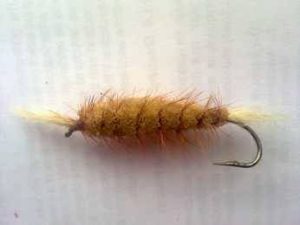
You and I all have our favourite wet flies in the box. Flies that seem to fish much better than other flies. They might be torn up and dull looking but will produce fish on the bank time after time… It is probably this ruggedness and bland looks that holds the secret to your success with this particular fly. If you look closely, you will find that the fly has become somewhat altered from usage. It could be little strands of wool coming undone – Hair splitting up from casting and fish teeth tearing at them – fading colours, etc. All are adding up to a more translucent appearance.
Dry flies made with deer hair will also improve with time – If the deer hair becomes hollow! When used over and over again – Something I will try to prove through a picture of detail – The detail section is from the image above of the super-bomber
Note the hollowness of the hairs that gives the fly this see-through appearance … as seen on the close-up of the deer hair body…. By the way, anglers have offered our UK friend lots of money for this particular super-fly… It is not for sale…we have been informed…

 The Bomber Story
The Bomber Story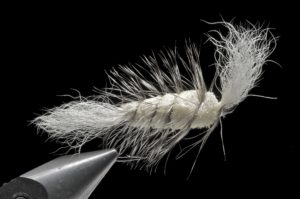
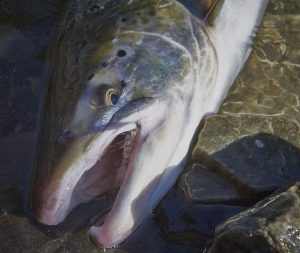
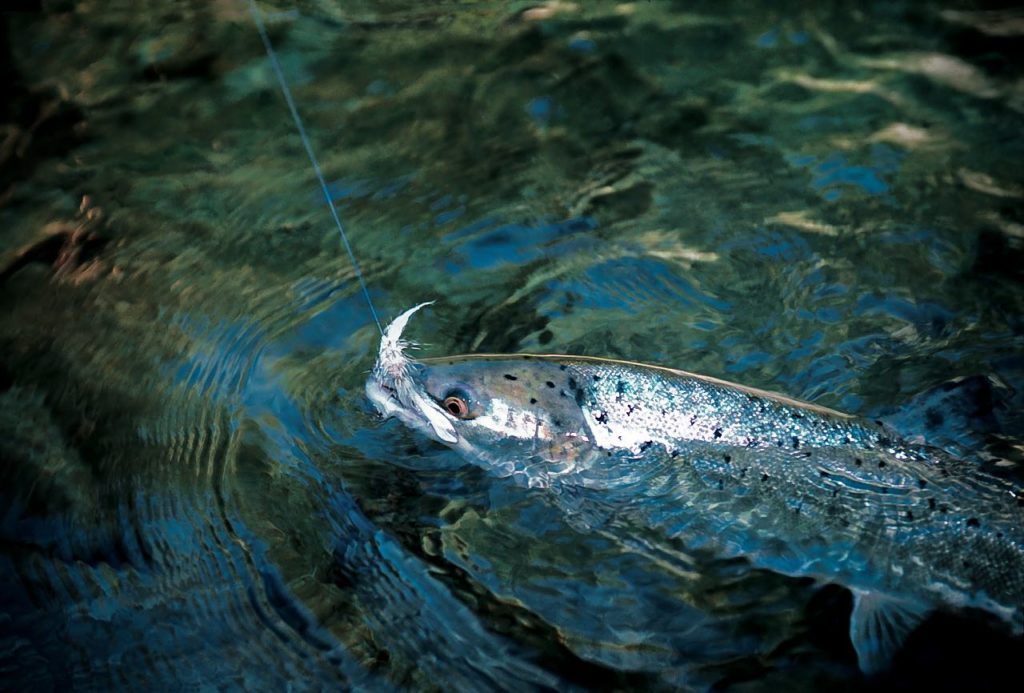
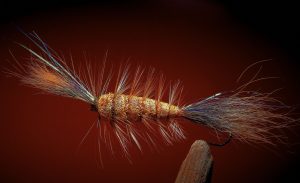 Wake style Bombers
Wake style Bombers
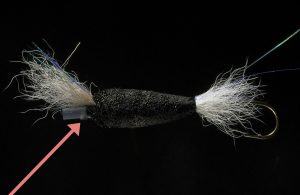
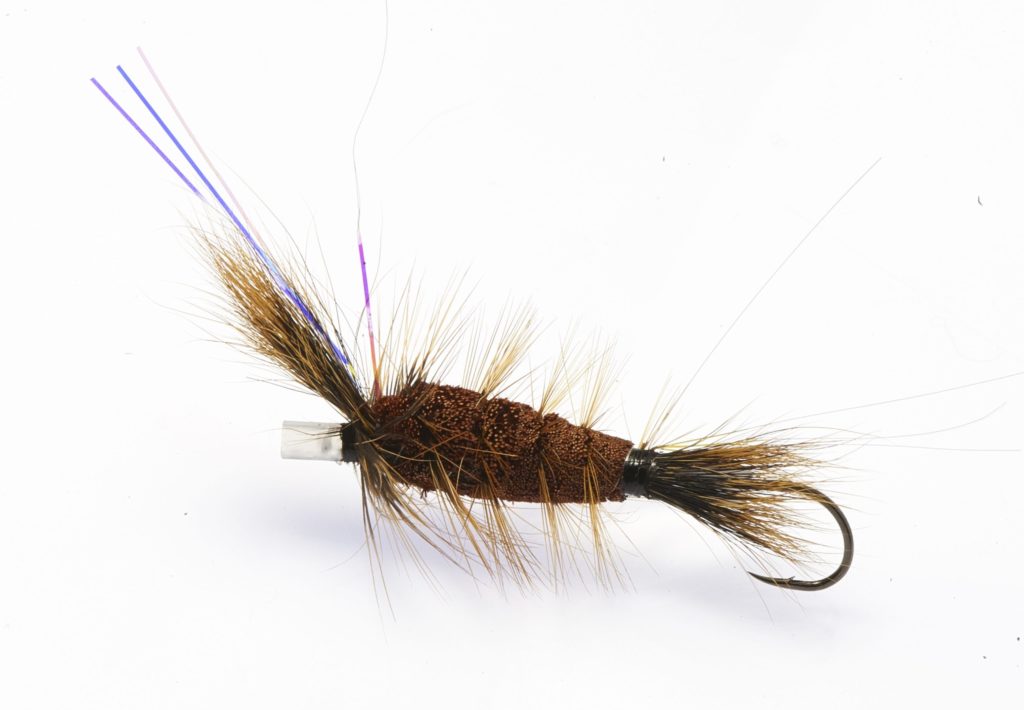
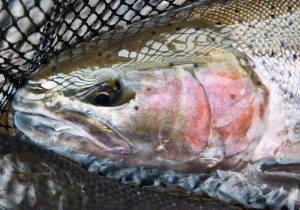 See our page on
See our page on 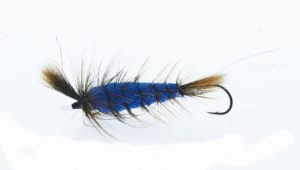 Tube Bombers made for dead drift.
Tube Bombers made for dead drift. different hook-hold than that of the traditional salmon dry fly.
different hook-hold than that of the traditional salmon dry fly. 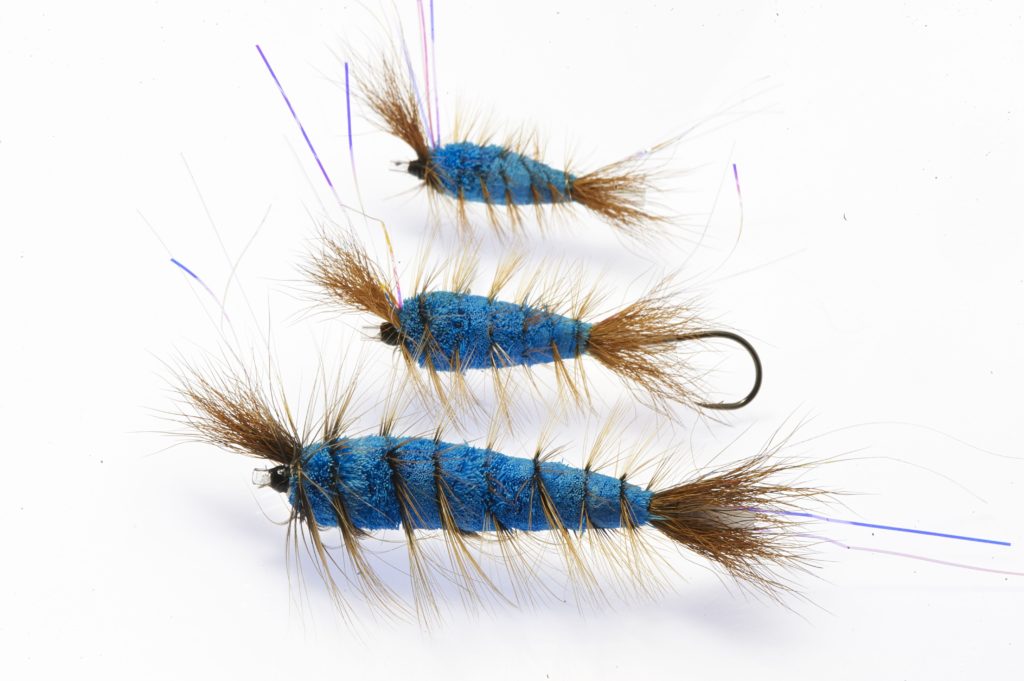
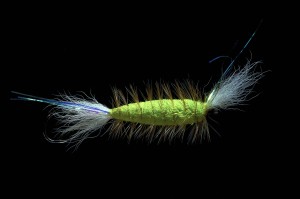
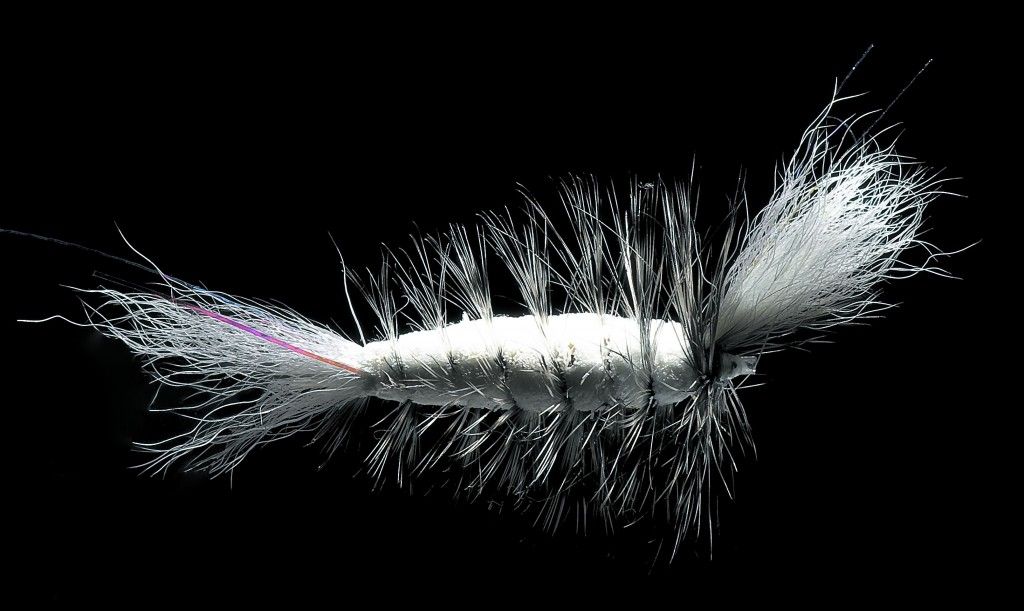
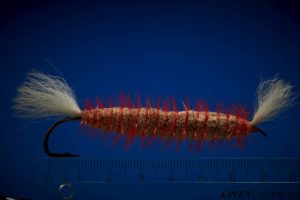 Large flies
Large flies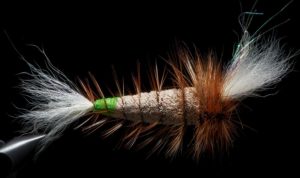
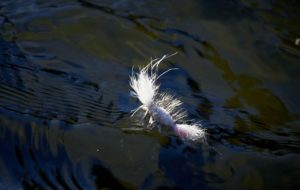 Small flies
Small flies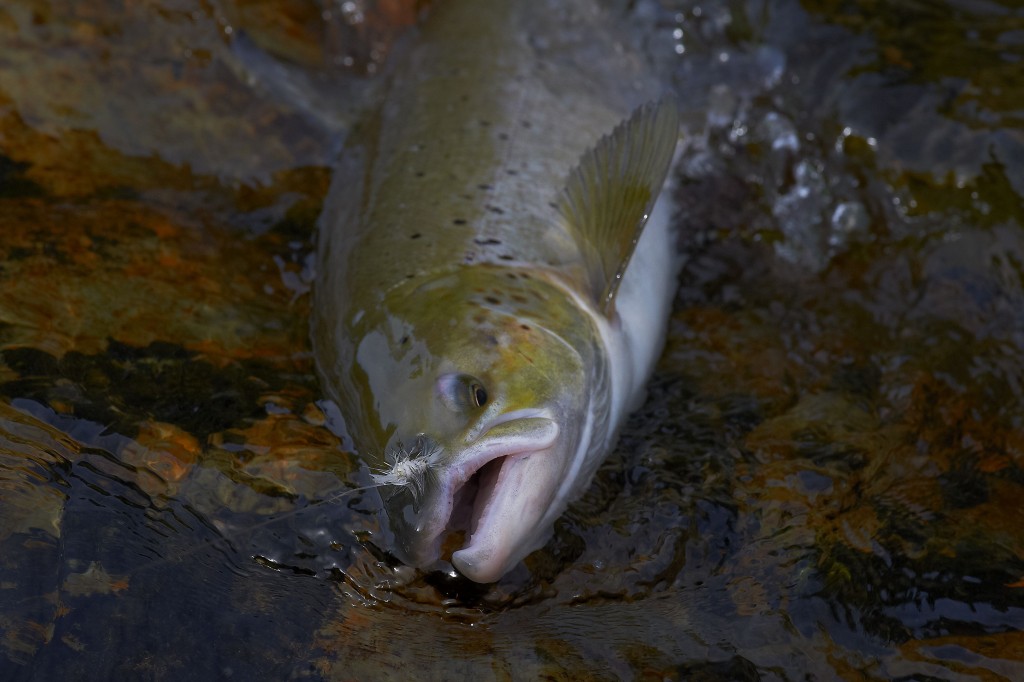
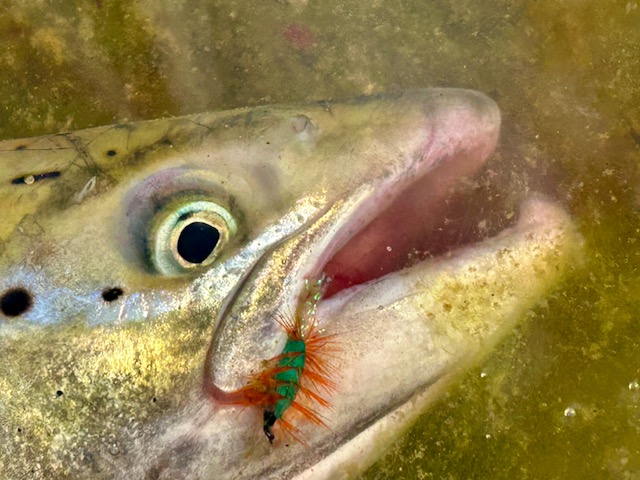 Salmon Bugs
Salmon Bugs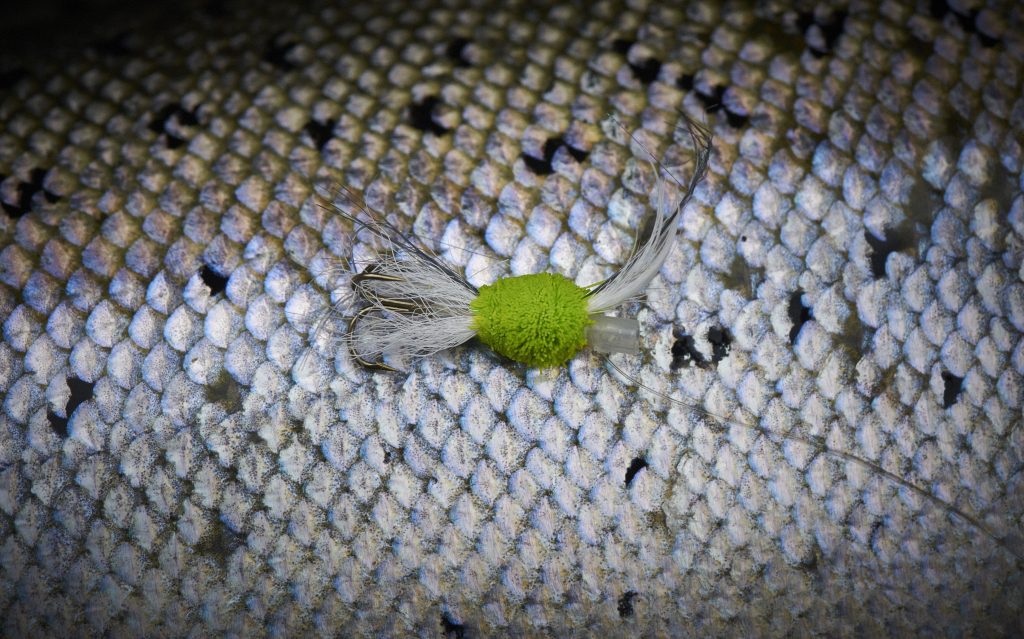
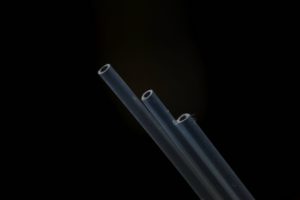

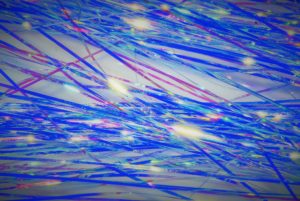 Tinsel
Tinsel Deer hair is deadly.
Deer hair is deadly.